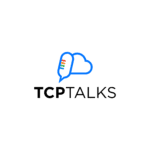
Applying and Maximizing Observability
In this episode, Christine talks about her company, Honeycomb which runs on AWS, with the goal of promoting observability for clients interested in the performance of their code or those trying to identify problem areas that need to be corrected.
Christine Yen is the Co-Founder and CEO of Honeycomb. Before founding Honeycomb, she built analytics products at Parse/Facebook and loved writing software to separate signals from noise. Christine delights in being a developer in a room full of ops folks. Outside of work, Christine is kept busy by her two dogs and wants your sci-fi & fantasy book recommendations.
Notes
Honeycomb is an observability platform that helps customers understand why their code is behaving differently from what they expected. The inspiration behind this software came after Christine’s previous company was acquired by Facebook and they realized how software made it very easy to identify problems in large code data within a short time. This encouraged them to build the tool and make it available to all engineers.
If the first wave of DevOps was Ops-people learning how to automate their working code, the second wave would be helping developers learn to operate their code. Honeycomb is designed intentionally to ensure that all types of engineers can make sense of the tool.
Honeycomb has always come up with ways for customers to use AWS products and get the data reflected in Honeycomb to be manipulated. Over the last few months, they have ensured that it is possible for clients to plug into CloudWatch Log and CloudWatch metrics, and redirect data directly from AWS products into Honeycomb instead. Clients can also use Honeycomb to extract data based on what their applications are doing. This applies to performance optimization, experimentation, or any situation where a company wants to try a code to see how it performs on production. The focus remains on the application layer. Before Honeycomb, no one was using observability in this context.
The pricing of Honeycomb is based on the volume of data, which makes it predictable and understandable. Unlike when the pricing scale is based on the fidelity of the data, which can be quite expensive.
Challenges within the observability space: The question is how to help new engineers learn from the seasoned engineers on the team through paper trails left by the seasoned engineers. This is a problem that can only be solved by enabling teams to orient new engineers on their systems without having to create another question as part of the code.
Building an AI Approach in Honeycomb may not be suitable because of the context involved, since training effective machine learning models relies on a vast amount of easily classifiable data and this does not apply in the world of software; every engineering team’s systems are different from every other engineering team’s systems. Honeycomb is interested in using Al to build these models in order to help users know what questions to ask.
With Honeycomb, usage patterns are much more dependent on the curiosity and proficiency of the engineering team; while some engineers who are used to getting answers directly may just leave the software, those who have a culture of asking questions will benefit more from it.
Top Quotes
- 💡 “Not having to predict ahead of time what matters, is making such a difference in our ability as engineers to get ahead of issues, identify them quickly, resolve them”
- 💡 “We’re out of a world where any individual engineer holds the entire system in their head”
- 💡 “Observability is the only way forward as we make our worlds ever less predictable”


